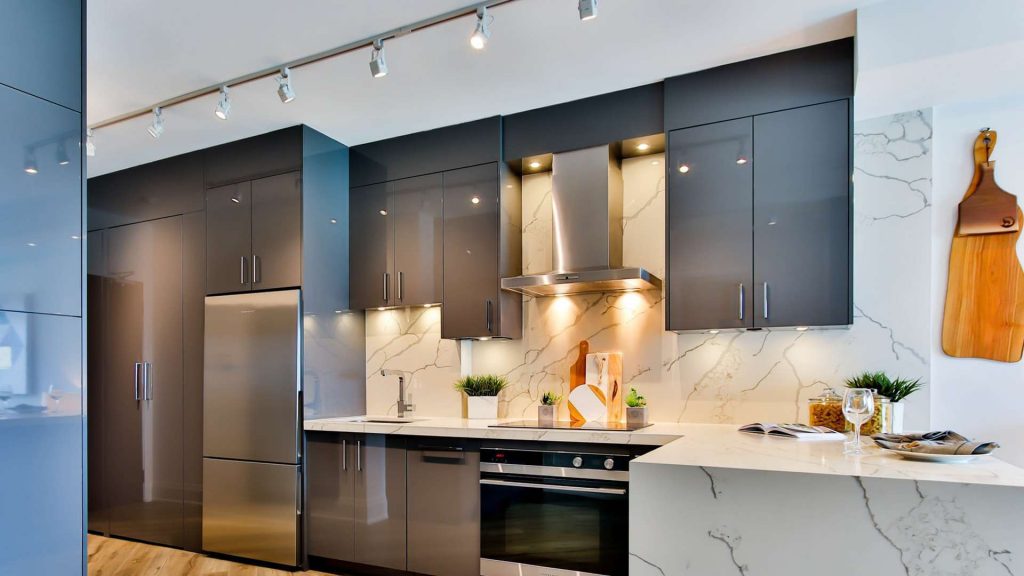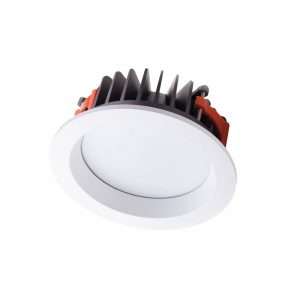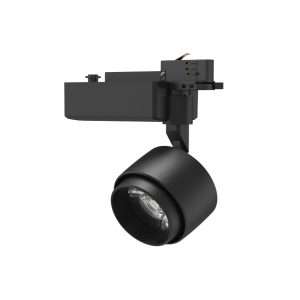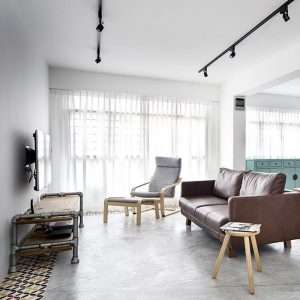What are The 3 Basic Types of Lighting?
“My best advice whatever you’re doing, whatever you want to achieve, is to create three layers of lighting—ambient, task, and accent,” says Patricia Rizzo of the Lighting Research Center.
So, the question is how to differentiate between these 3 types of lighting?

First and Most Basic Type: Ambient Lighting
Ambient lighting is general lighting that provides uniform lighting in a space. It is also the most basic out of the three lighting types.
Ambient lighting using indirect or global illumination which is putting several indirect luminaires at various locations. It is mostly to reduce sharp contrast between light sources to allow people to navigate safely in space.
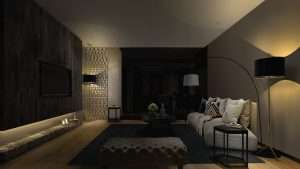
What to take note for ambient lighting?
The most important factor to be considered for this type of lighting is the size and shape of a space. It can be used to determine which types of light source to be used to create the mood and character of the interior.
For example, blue light source for a colder theme in areas such as living rooms, toilets, and study areas. While yellow light for warm and cozy theme in areas such as bedrooms.

How to achieve balanced, comfortable illumination?
When using ambient lighting, it is important to provide a comfortable level of illumination without too much glare. Since ambient lighting is a primary source of light to light up the whole room.
A balance should be achieved everywhere of the room and not just only lighting one corner and every single corner of the room. This may cause the room to become either too dark or too bright.
It may cause danger and discomfort for you. As you may find it hard to know where to navigate in dark or you may strain your eyes to see when it is too bright.
What are the lighting fixtures for ambient lighting?
-
- chandelier light
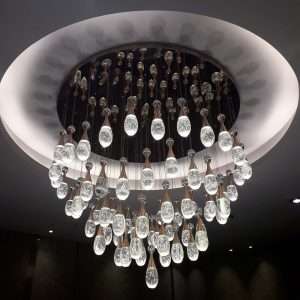

- chandelier light
-
- cove light
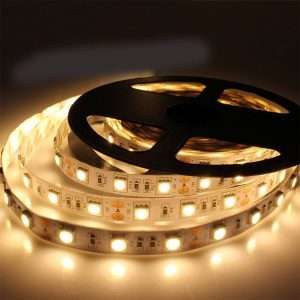

- cove light
-
- light kits on ceiling fans


- light kits on ceiling fans
You can let in daylight as a source for ambient lighting with windows and skylights during the day. Yet, using other ambient light from electrical source for rainy days, evenings, and nights.
Furthermore, you should install a dimmer too. So that the brightness can be controlled to fit with the atmosphere of the room.
Conclusion, by creating the right ambient lighting, it can improve the dull appearance of a room and make it more interesting by giving a little personality.

Second Type: Task Lighting
Task lighting is quality lighting for completing specific activities with high efficiency. It means that it only lights up particular area to let you complete your tasks easily.
It is also a direct form to be able to look at the details more clearly.

Ambient Lighting vs Task Lighting
The main difference between ambient lighting and task lighting is that task lighting needs to have at least three times higher illuminance level than ambient lighting. This is to let you shift your attention from task to surrounding area and vice versa with the least adjustment.
However, the purpose of task lighting is not to increase the illuminance but to improve the contrast. Since you can reduce the illuminance of ambient lighting when task lighting is focused on places required.

What to consider for effective planning of task lighting?
You must first identify and determine the characteristics of each tasks that requires special lighting. Then, you can decide which kind of strategy to be used.
Examples of strategies:
- localized average lighting which it supplies both ambient and task light
- freely adjustable task light such as gooseneck, balanced-arm lamp or swing-arm light which could be adjusted freely to one’s will
- asymmetric task light which the lamp is placed at the side of the work area

Other factors that should be focused when planning are age and eyesight of the users.
For example, increasing in lighting and contrast can help elderly people in performing their tasks such as reading better.
Another example is making sure that the brightness is suitable for the people with bad eyesight. Since not enough brightness could strain the users’ eye and further damage their eyesight.

How to apply task lighting in home?
Task lighting for living home is normally used around study areas, reading areas, cooking areas and sewing areas which requires more brightness for daily tasks.
For example, you can put a table lamp or study lamp on top of the study table. It could be adjusted to various angles and positions to light up certain areas of the table.
In addition, task lighting for kitchen uses under cabinet light like led strip light to light up the counters below the cabinets for safer food prepping.
Examples of light bulbs used for task lighting are halogen bulbs and LED bulbs.
Halogen bulbs is a good choice for task lighting because they produce white light which is similar to daylight.
LED bulbs is also another good option as they produce a direct, bright light that would not heat up if working for a long period of time.
Both of them are really common as they both provide high lumens and less wattage.
Task lighting lights up a particular area to assist in people to complete their tasks more effectively and conveniently.

Last But Not Least, Art of Lighting: Accent Lighting
Accent lighting is known as the Art of Lighting which it focuses light on certain area or an object that could bring the attention of people. This type of lighting is mostly for decoration purposes and to make the art and artifacts stand out for presentations.
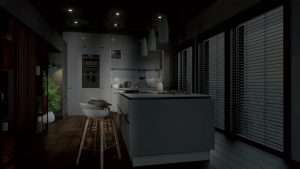
Lighting Techniques
Accent lighting can also create extra drama and character to the areas or objects by using different types of lighting techniques.
Grazing
- the textures and details of the object can be shown very clearly
- the light is directed very closely to the object
- work well on natural stones, walls and woods
- helps creating shadows for the natural indentations
- draw more attention to the texture of the objects
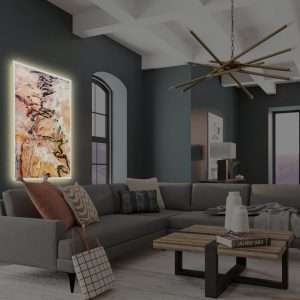
Backlighting
- give a halo effect and various silhouette patterns
- putting the light source behind the object
- like picture frames, TVs and sculptures
- selecting specific point of emphasis on objects creates more depth for presentation
- For example, a light source can be used to only illuminate specifics part of an artwork and not the entire parts
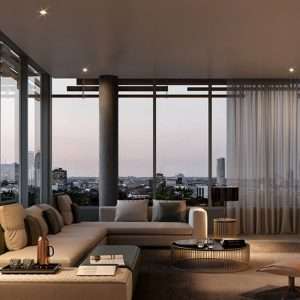
Adjusting the shadows
- avoid unwanted shadows
- can also be planned as unique focal point, depending on the light source lumens and intensity, the distance from object and aiming angle
- hard lines for more drama and harsh attributes
- soft lines which are more subdued and less attractive
What tips for a successful accent lighting?
The critical points for the success of accent lighting is to choose the best angle to position the light source to create contrast and avoid direct glare to the eyes. For example, angle to the wall at 30 degrees.
The next critical point is to determine the contrast of accent object and surrounding. For example, the color, its surrounding and also the illumination level contrast.
Which are the common types of lights for accent lighting?
-
- wall mounted lights
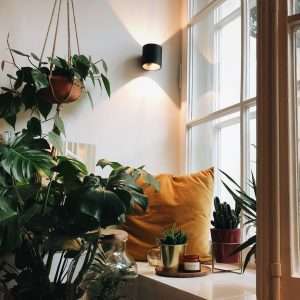
- wall mounted lights
-
- floodlights
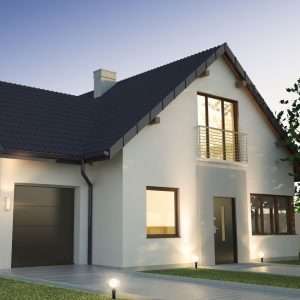
- floodlights
-
- led downlights

- led downlights
-
- floor lamps

- floor lamps
-
- track lights
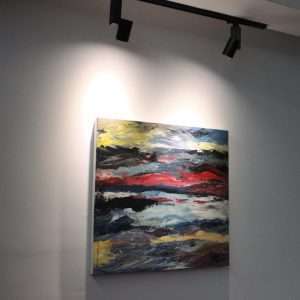
- track lights
For example, you can use led downlights or led spotlight to shine on your family photo. This way the visitors would know the photo displayed is important and precious to you.
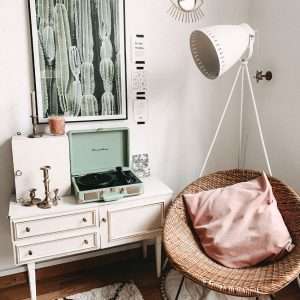
Floor lamps are also frequently used in living home as décor. For example, floor lamps are normally placed at the corner of the room or right beside a couch for aesthetic purposes.
Accent lighting gives more character and drama to the surrounding as it focuses light onto certain objects and areas as decoration purposes.
Conclusion
After understanding these three types of lightings, you can start planning your light layering for your living home. Do not forget that lighting design is also part of your interior design too.

